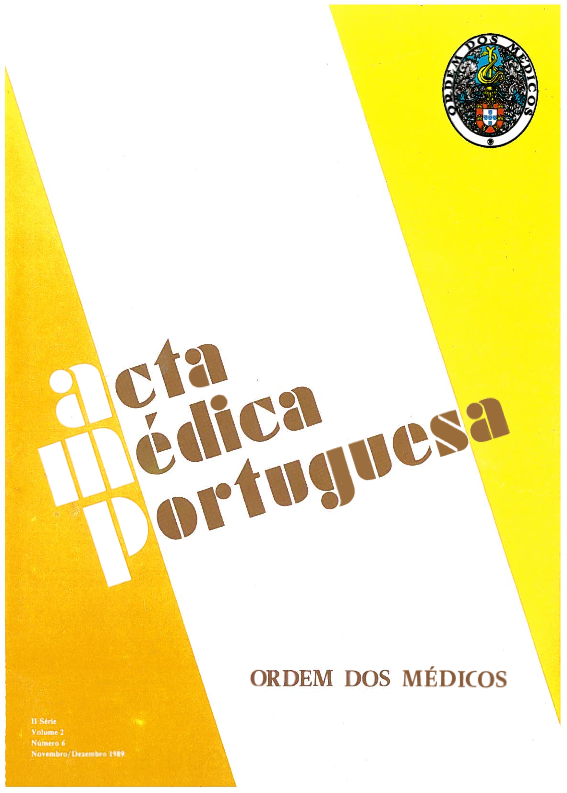Considerações semiológicas e interesse clínico da ressonância magnética (R.M.) em 11 aneurismas intracranianos.
DOI:
https://doi.org/10.20344/amp.3495Resumo
The author's experience with high-field Magnetic Resonance (Signa, 1.5 T, G.E.) in 11 cases of intracranial aneurysms (6 presenting as space lesion and 5 with symptoms of rupture) is reported. Spin-echo, gradient-echo and GRASS (fast-scan or flip-angle) sequences have been used and results compared with those of CT-scan and angiography. Magnetic Resonance findings, relating to blood flow and oxidation of haemoglobin (within the lumen, in the wall and at the periphery of the aneurysm) were interpreted from the point of diagnosis and surgical planning. The authors concluded that Magnetic Resonance should be considered as a routine investigation for intracranial aneurysms particularly when it is suspected that they might be voluminous and/or thrombosed.Downloads
Downloads
Como Citar
Edição
Secção
Licença
Todos os artigos publicados na AMP são de acesso aberto e cumprem os requisitos das agências de financiamento ou instituições académicas. Relativamente à utilização por terceiros a AMP rege-se pelos termos da licença Creative Commons ‘Atribuição – Uso Não-Comercial – (CC-BY-NC)’.
É da responsabilidade do autor obter permissão para reproduzir figuras, tabelas, etc., de outras publicações. Após a aceitação de um artigo, os autores serão convidados a preencher uma “Declaração de Responsabilidade Autoral e Partilha de Direitos de Autor “(http://www.actamedicaportuguesa.com/info/AMP-NormasPublicacao.pdf) e a “Declaração de Potenciais Conflitos de Interesse” (http://www.icmje.org/conflicts-of-interest) do ICMJE. Será enviado um e-mail ao autor correspondente, confirmando a receção do manuscrito.
Após a publicação, os autores ficam autorizados a disponibilizar os seus artigos em repositórios das suas instituições de origem, desde que mencionem sempre onde foram publicados e de acordo com a licença Creative Commons









